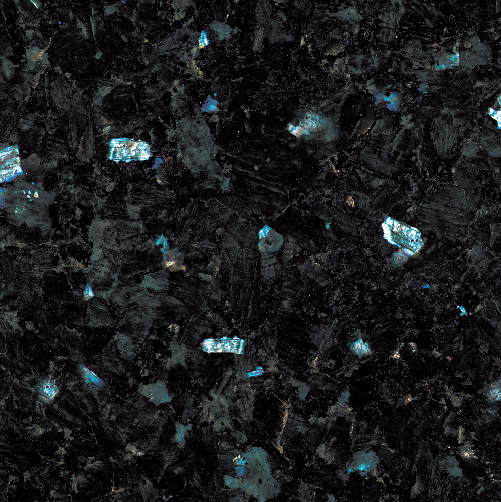GRANITE
Granite is a massive igneous rock, with coarse grain (crystals up to a few millimeters in size), formed at great depths (thus being part of the plutonites), containing mainly quartz, feldspar or dark minerals.
The boundaries are formed by acidic magma rich in silicates, which comes from the depths (phenomenon favored by tectonic movements) and which near the surface of the earth (depth below 2 km) solidifies by slow cooling in cracks in the crust, sometimes several hundred kilometers in diameter.
Granite is the hardest building stone, used in tiles, occupying an important place among the dimensioned stones. Its hardness, weather resistance, its ability to be polished like a mirror, fascinating colors and textural patterns make this material extremely popular.
The main features of granite include, also, a large bearing capacity, abrasive and crushing power, the docility of cutting and modeling without secondary defects, ability to produce thin and / or large plates and – above all - durability, which is why it has obtained a special status among constructions globally.
In terms of physical properties, the borders are hard rocks, compact, with fine and / or coarse granules of metamorphic or volcanic origin, with the following characteristics:
- Hardness: 6 – 7 on the Mohs scale
- Density: 2.6 – 2.8 Kg/cm³
- Compression strength: 140 – 210 N/mm²
- How to break: 15 – 25 N/mm²
- Water absorption: 0.1-0.6%
- Quite low porosity
- Weather resistant
In terms of chemical composition, the borders are igneous rocks composed of quartz, feldspar and minerals such as ferromagnesian cryolite, chlorite, garnet etc. A typical granite will have the following chemical composition:
- Quartz (SiO2): 70-75%
- Aluminum oxide (Al2O3): 10-15%
- Calcium oxide (High): 0,5%
- Peridotit (MgO): 0,5%
- Bauxite (Ugly): 2-4%
- Bauxite (Fe2O3): 2-4%
- Alkaline: 4-6%
- Peridotit (TiO2): less than 0,5%
- Lose calcination (LAW): Less than 0,5%
In Romania, the largest granite quarry was located in Iacobdeal, Tulcea county, this has been known since the time of the Turkish occupation. The career has several fronts of work – in the valleys of Margarita, Serpents, The Italians and the Bachelor – arranged in the form of floors and connected to each other by means of inclined planes. The mined granite is gray, with shades of pink or pink with black or blue-green spots.
Agricin offers a wide range of materials from Spain, India, Turkey, China, Venezuela, Brazil, Finland, Norway or Zimbabwe, they have different sizes, thicknesses and finishes.
Description of terms used:
- peridotitele – they are part of the rocks with a large granulation, formed in the layers of the earth's crust, located at a depth of 200 – 300 km, containing at least 40% olivină, the rest being composed of orthopyroxenes and clinopyroxenes, minerals with a high concentration of aluminum, magnesium, iron which depending on the temperature and pressure at formation are associated with garnet, spinel and less frequently plagioclase.
- igneous rocks – are volcanic rocks formed by the solidification by cooling of magma from the upper mantle (asthenosphere) of the earth.
- plutonitul – it is a body of igneous rocks, generally large, fixed by the intrusion and slow consolidation of magma in the mass of sedimentary layers
- quartz – or natural silicon dioxide is found in unconsolidated rocks (like sand) or in the form of hexagonal crystals, transparent and colorless (in its pure state) or differently colored (when they also contain foreign substances)
- feldspatul – it is a very common silicate
- bauxite – is one of the most important aluminum ores and is composed mostly of aluminum-containing minerals



Other similar materials
















